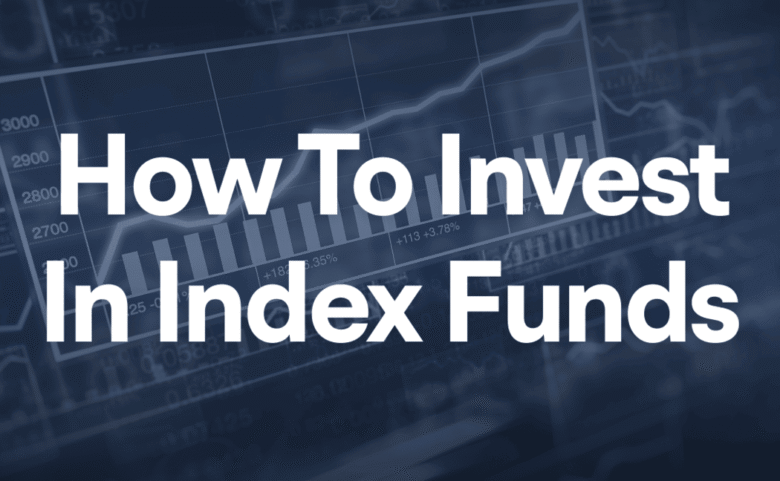Many people strive to become wealthy and financially independent. One of the most sought-after methods for achieving this goal is passive income. Of the many investment options available, index funds have become a popular choice for those seeking a sustainable, low-maintenance, and affordable way to grow their wealth. Compared to actively managed funds, index funds are easy to understand and offer a degree of predictability because they track a specific market index.
Their compound growth rate, low costs, and diversified allocation make them an ideal choice for generating passive income. Whether you’re just starting to invest or looking to maximize your portfolio, it’s crucial to understand how index funds work and how they generate passive income. This article explores the advantages and unique features of index funds and how you can maximize your profits while minimizing risk.
Index Funds and How They Contribute to Passive Income:
An index fund is a mutual fund or exchange-traded fund (ETF) that mimics the performance of a specific market index, such as the Dow Jones Industrial Average, the S&P 500, or the Nasdaq-100. Index funds passively replicate the investments of their target index, rather than a fund manager constantly selecting trades. This makes them more efficient and have lower management fees than actively managed funds. For those seeking passive income, the real magic lies in their ability to grow gradually and deliver reliable returns through dividends and market growth. Index funds are an excellent choice for long-term wealth accumulation because they diversify investments across multiple companies, reducing the risk of individual stocks.
What Makes Index Funds Ideal for Passive Income:
The simplicity of index funds is one of the key factors that makes them effective at generating passive income. Once acquired, they require little active management, and you don’t have to be a market expert to invest in them. Their lower expense ratios allow you to keep more of your money invested and build it over the long term. Historical evidence shows that most index funds outperform actively managed funds over the long term, largely due to their ability to avoid the pitfalls of excessive trading and high fees. Furthermore, they pay dividends, which can be withdrawn as monthly income or reinvested to accelerate compound returns. For investors seeking a “set a goal, never give up” strategy, index funds offer not only significant growth potential but also peace of mind.
The Benefits of Compounding with Index Funds:
Getting a return on your initial investment and past gains is known as compounding. Index funds, designed for long-term holding, excel in maximizing the benefits of compounding. When you reinvest dividends back into the fund, you are essentially buying additional shares, generating even more dividends. Even small monthly contributions can grow into a significant passive income stream over time thanks to this snowball effect. Time is your greatest ally when it comes to wealth accumulation, because the sooner you start investing in index funds, the greater the compounding effect.
Diversification and Risk Management with Index Funds:
Diversification is one of the key advantages of index funds. Because they track a market index, they automatically spread your investment across dozens or even hundreds of companies, sectors, and industries. This limits the negative impact of a single company’s performance on your overall return. This is crucial for those seeking passive income, as it guarantees stable and predictable cash flow. While market downturns can still impact your portfolio, diversification significantly reduces the risk of catastrophic losses compared to investing in individual stocks.
Dividend Income from Index Funds:
Many index funds offer investors monthly dividend payments in addition to capital growth. Investing in index funds focused on dividend-paying companies can help you convert these dividends into a steady stream of passive income. You can use these dividends as a consistent income stream or reinvest them for faster growth. Over time, your dividend income grows along with your portfolio, creating a self-sustaining cycle of wealth accumulation. Dividend-focused index funds are, therefore, an excellent choice for retirees or anyone looking for a steady income stream without having to liquidate their investments.
How to Start Investing in Index Funds for Passive Income:
Getting started with index funds is easier than most people think. The first step is to choose a reliable brokerage platform that offers a variety of index funds and exchange-traded funds (ETFs). Then, find an index fund that supports your goals, whether it’s income, growth, or a combination of both. Many experts recommend starting with a dividend-focused fund for income or a broad index fund that tracks the S&P 500 for overall growth. To benefit from dollar-cost averaging, you must choose between investing a large amount and setting automatic redemptions. Once invested, it’s crucial to remain consistent and avoid impulsive trading during market fluctuations.
A Way to Increase Long-Term Passive Income with Index Funds:
If you want to generate substantial passive income with index funds, patience and persistence are essential. To maximize compound returns, focus on reinvesting dividends during the compounding period. To spread risk and benefit from growth across multiple sectors, you can diversify across various index funds, including large-cap, small-cap, foreign stock, and bond index funds. Review your portfolio regularly to ensure it remains aligned with your financial goals, but avoid frequent adjustments to respond to short-term market fluctuations. Give index funds time to work, as their strength lies in their ability to generate consistent, long-term returns.
Conclusion:
Index funds are a simple, affordable, and proven way to generate passive income. They combine diversification, low costs, and the effects of compound interest, allowing investors to grow their assets over time without the need for ongoing portfolio management. Whether you want to achieve complete financial independence, prepare for retirement, or supplement your income, index funds can be an important part of your plan. It’s crucial to start early, stay consistent, and let time work in your favor. While no investment is completely risk-free, index funds are one of the safest and most reliable ways to convert your assets into a steady stream of passive income for years to come.
FAQs:
1. Are index funds safe enough for beginners?
Because they offer diversification, minimal costs, and a hands-off approach, index funds are certainly beginner-friendly and well-suited for beginning investors.
2. What is the minimum amount required to start investing in index funds?
Because ETFs can sometimes be purchased as individual stocks, almost anyone can invest, and many brokers offer the option to start with as little as $50 to $100.
3. How often do index funds pay dividends?
Depending on the fund, some index funds pay dividends annually or semi-annually, but most pay quarterly.
4. Should I keep my dividends as income or reinvest them?
If you’re looking for long-term returns, reinvesting dividends maximizes compounded returns. Using dividends as income is a smart choice if you need cash flow right away.
5. Do index funds lose value?
Compared to individual stocks, the diversified nature of index funds helps reduce the risk of significant losses, although they can still lose value during market downturns.




